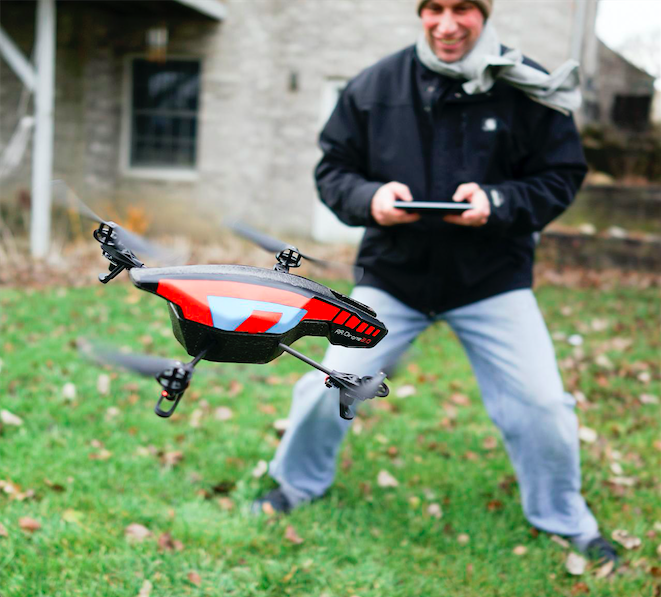Drones for Christmas and Airspace Rights
The question over who owns the airspace immediately above your house has been brought to the national stage with Annie Sneed’s recent article in Scientific American, “So Your Neighbor Got a Drone for Christmas.” I have previously commented on the issue of a landowner’s airspace rights (see, for example, my excerpts from the Nov2015 OSU drone conference and my Aug2015 interview for an article in the Denver Post).
Sneed’s article points out an interesting issue. How is Amazon supposed to deliver your package (via drone) if you live in an apartment but your upstairs neighbor won’t allow it? The article leaves this question hanging but the answer, of course, is that permission for drone operations over the building would be handled by the property management in the form of a notification in the lease or, in the case of a condo, by the home owner association (possibly requiring unanimous approval).
But let’s not forget that the easiest example has still not been resolved. I live out in the country (10 miles east of the nearest town big enough to have a city council). My nearest neighbor is a quarter-mile away. The FAA currently has no regulation preventing my neighbor from hovering a recreational drone 100 feet over the top of my house.
While there continues to be deafening silence at the federal level, state and local governments are stepping in. As Sneed’s article notes, Oregon passed a law in 2013 that permits landowners to sue someone for operating a drone less than 400 feet over their property more than once without permission. I follow numerous drone forums and advocates online. It is interesting that although they were very quick to report that the Hillview, Kentucky man who shot down a recreational drone over his property had been arrested, they were utterly silent about the result of his court hearing. As reported by local station WDRB on their website, the judge found that since two eyewitnesses reported seeing the drone below the treeline, it constituted an invasion of privacy and the property owner “… had a right to shoot at this drone …” The judge then dismissed the charges.
It’s a thorny issue and it needs to be resolved sooner than later. The FAA regulates the airspace from the heavens down to the grass (yes, the FAA has an office of Commercial Space Transportation). However, Sneed’s article notes that it is state law, not federal, that determines property rights. Furthermore, as the Supreme Court held in the 1946 matter of United States v. Causby:
“We have said that the airspace is a public highway. Yet it is obvious that if the landowner is to have full enjoyment of the land, he must have exclusive control of the immediate reaches of the enveloping atmosphere. Otherwise buildings could not be erected, trees could not be planted, and even fences could not be run. The principle is recognized when the law gives a remedy in case overhanging structures are erected on adjoining land. The landowner owns at least as much of the space above the ground as he can occupy or use in connection with the land. See Hinman v. Pacific Air Transport, 9 Cir., 84 F.2d 755. The fact that he does not occupy it in a physical sense—by the erection of buildings and the like—is not material.” [See the full text at the Cornell Law website]
Use of drones by package carriers, law enforcement and journalists is important and needs to be accommodated. But can we at least start by agreeing that a hobbyist may not hover a drone outside my bedroom window?

